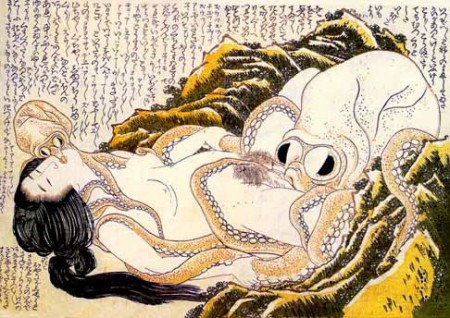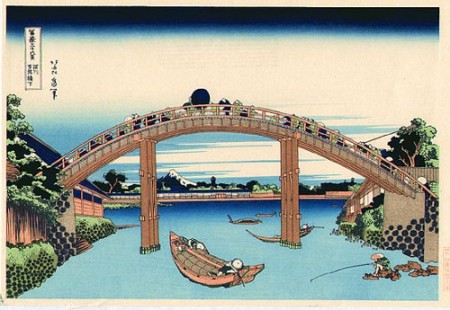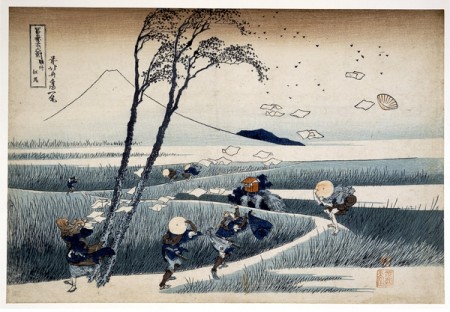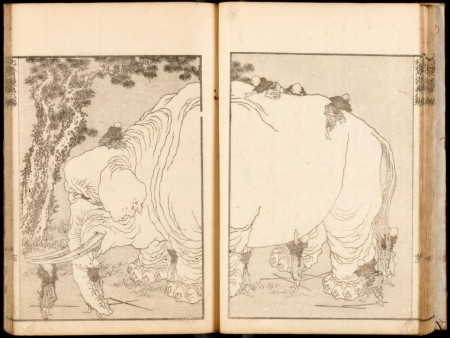And Now for Some High Culture
Now we are traveling from 1970 and hot pink notepads to eighteenth century Japan. There is a scene on Mad Men when Bert Cooper (Robert Morse) shows everyone his new Japanese print, The Dream of the Fisherman's Wife by Katsushika Hokusai (葛飾北斎, 1760–May 10, 1849). This is the erotic print of a woman and her favorite octopus at play. Hokusai was an artist and printmaker during the Edo period. He was a genius at utilizing traditional Japanese methods and introducing western art concepts. At first glance, it may seem that these are simply traditional Japanese ukiyo-e prints.
Hopefully, this won’t seem like a Wednesday afternoon in art history when everyone falls asleep, but I’m going to explain some of the reasons why Hokusai is so amazing. His most famous print, The Great Wave Off Kanagawa, is a perfect example. He uses the western approach to perspective; a small Mt. Fuji expresses distance. The wave in the foreground echoes the shape of Mt. Fuji. This is contrary to traditional Asian methods that show perspective by layering objects on top of each other. The most distant objects are at the top of the page and are not smaller. He also introduces working class fisherman, also a western concept, as opposed to representing only the nobility.
I love the sense of wind expressed so delicately in Ejiri in Suruga Province (Sunshū Ejiri). The simple line used to draw Mt. Fuji allows the air to feel light and active. And Blind Men With An Elephant taken from Hokusai’s notebooks is beautiful, light, and humorous. Now you may be asking, “What the hell does this have to do with anything?” For me, this work ties together so many wonderful elements that I admire: craft, levity, minimalism, innovation, and experimentation. See, that wasn’t so bad. Not at all like those sleepy afternoons in Art History.






